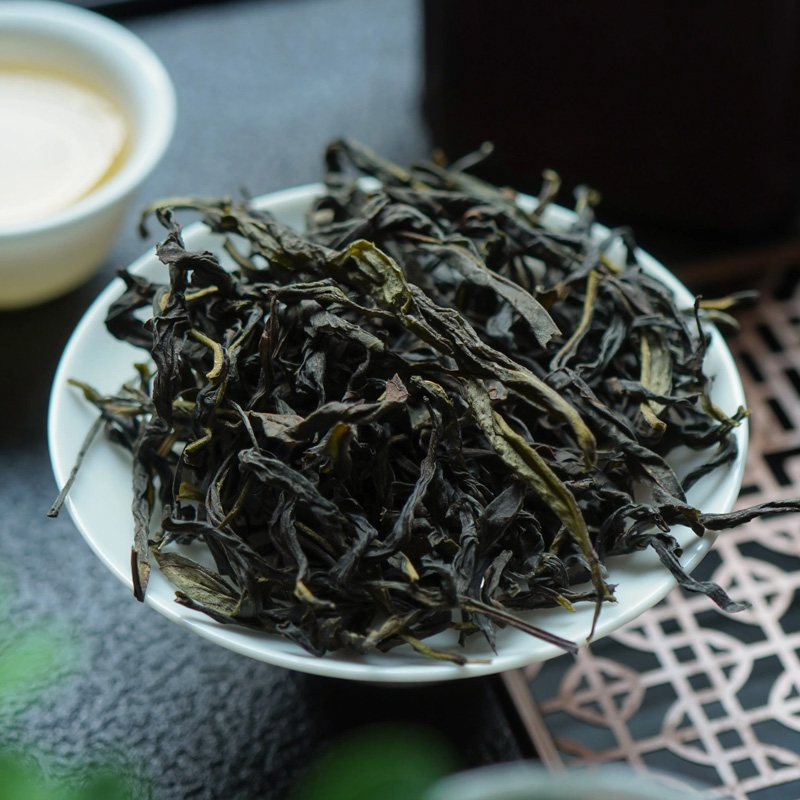Rock tea

Rock tea
Rock tea, as one of the traditional famous teas in China, is known for its unique rock flavor (rock bone floral fragrance) quality characteristics:
1、 Basic Information
Chinese name: Rock Tea
Nickname: Oolong Tea
Boundary: Plant Realm
Door: angiosperm door
Class: dicotyledonous plant class
Category: Theaceae
Family: Theaceae
Distribution area: Mount Wuyi Tea Area, Fujian Province, China
Tea category: Green tea, semi fermented tea
2、 Morphological features
Rock tea belongs to the Camellia family and is a tree plant with unique morphological characteristics. Its flowers are axillary, white, with sepals broadly ovate to rounded, hairless; Petals are broadly ovate in shape, slightly fused at the base, with no hairs on the back and sometimes short hairs; Capsule spherical; Leaves oblong or elliptical, base wedge-shaped, serrated. The flowering period is usually from October to February of the following year, and the fruiting period is in October of the following year.
3、 Origin and Growth Environment
Rock tea is mainly produced in Mount Wuyi Tea District, Fujian Province, China. This area has a mild climate, warm in winter and cool in summer, and abundant rainfall, providing unique natural conditions for the growth of rock tea. Tea farmers utilize unique terrain such as rock pits, crevices, and fissures to build stone banks along the edges to cultivate tea, forming a "potted" tea garden, which is also the origin of the name rock tea.
4、 Classification and Varieties
According to different growth conditions, rock tea can be divided into regular rock, semi rock, and Zhou tea. Zhengyan tea is produced in high-altitude areas such as Huiyuankeng, Niulankeng, Dakengkou, Liuxiangjian, and Wuyuanjian; Half rock tea is produced in the lower altitude areas of Qingshiyan, Bishiyan, Matouyan, Shizikou, and Jiuquxi; And Zhou tea is produced in sandy tea gardens on both sides of Wuyi Rock, such as Chongxi and Huangbaixi.
There are many varieties of rock tea, among which the most famous is Dahongpao. The Dahongpao tea tree is a shrub type with a semi open crown and dense branching; The leaves are wide oval shaped, with a dark green and glossy color; Large flower shape, sparse and slightly long filaments, uneven height. In addition, there are many varieties such as cinnamon, narcissus, orchids, exotic varieties, stone milk, Buddha's hand, and plum blossoms.
5、 Production process
The production process of Wuyi rock tea is complex and refined, including multiple steps such as picking, withering, greening, roasting and rolling, initial roasting, sun drying and picking, and re roasting. Among them, greening is a key step in quality formation. By shaking the leaves, they rub and collide with each other, producing fermentation and forming the unique red edge with green leaves of rock tea.
6、 Quality characteristics
Rock tea has a unique rock flavor quality characteristic, namely "rock bone floral fragrance". The tea soup has a smooth and delicate taste, rich and silky texture, and a long-lasting aftertaste; The aroma is high and long-lasting, with a long-lasting and clear fragrance, and a long-lasting and mellow taste. The "rock bone" of rock tea refers to the abundant tea qi and distinct throat rhyme; And 'floral fragrance' is a natural floral fragrance formed in the tea making process, which has its own unique aroma depending on the variety.
7、 Pharmacological effects
Rock tea not only has the health care functions of ordinary tea, such as improving eyesight and calming nerves, protecting stomach and warming stomach, eating and losing weight, but also has a variety of effects such as preventing atherosclerosis, lowering blood lipids, lowering blood pressure, lowering blood sugar, anti-cancer, cancer prevention, radiation prevention, etc. Especially aged rock tea, its pharmacological effects are more pronounced.
8、 History and Culture
Rock tea has a long history, and its production process and quality characteristics have gradually improved and enhanced over a long period of historical development. Rock tea is not only one of China's traditional famous teas, but also an important part of Chinese culture. During the process of tasting rock tea, people can not only enjoy the richness and fragrance of the tea soup, but also feel the profound cultural heritage and unique charm of tea.




